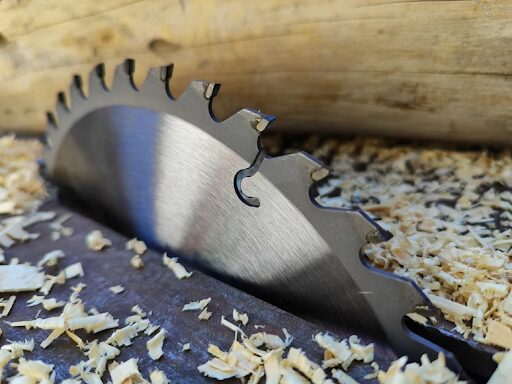Want your business to be more productive and profitable?
There’s nothing more frustrating than spending time, money and energy on cutting tools to find out they’re not meeting your business needs. Traditional steel blades are reaching their limits when it comes to performance, and businesses that stick with them are missing out.
If you’re struggling to keep up with production demands and maintain profitability, it might be time to make a strategic investment in carbide blades.
Over 80% of automotive manufacturers already use carbide tools
You’re not alone if you’re worried about your cutting tools. According to a recent report, over 80% of manufacturers in the automotive sector have already switched to carbide tools for their production operations. If that many successful businesses have made the transition, it’s worth asking: what makes carbide so different?
As it turns out, the answer has everything to do with productivity.
Time is money
In any production operation, downtime is the enemy. But it’s something most businesses have to deal with, especially when it comes to cutting tools.
Have you ever stopped to consider how much of your employees’ time is spent changing blades, sharpening tools and waiting for equipment to warm up?
This is dead time where no real work is being done. It costs money and it reduces your overall productivity.
In fact, research shows that in automotive manufacturing alone, up to 60% of machining time is wasted on changing tools and general maintenance. If a business like yours isn’t yet seeing its bottom line suffer, it’s only because the productivity losses haven’t caught up with it yet.
Steel blades and carbide blades
So how does carbide fit into this problem?
Simply put, if traditional steel blades are the problem, carbide blades are the solution.
High performance carbide alloys last significantly longer than standard steel blades. A good carbide tool can last 10-20 times longer than comparable steel, reducing downtime and making operations more efficient.
Carbide blades cut faster, have a superior finish quality and better heat resistance than steel blades, meaning more work done in less time with less scrap and rework.
Integrating carbide blades into your business is a strategic investment in increasing productivity and, therefore, profitability.
The data speaks for itself
Let’s look at the facts: carbide blades are taking over, and for good reason.
Statistics show that the carbide blade market is set to reach $3.2 billion by 2032, with a steady growth rate of 6.5%. This number doesn’t come from nowhere.
Businesses are learning the hard way that tools with shorter life, slower speeds, more downtime and inferior performance don’t just have a higher cost per cut.
They also cost real money in reduced productivity, frustrated employees and dissatisfied customers.
Manufacturing productivity increased in Q2 of 2025, but smart businesses know there’s room for improvement. When 80% of automotive manufacturers are already using carbide tools, you can be sure that the productivity advantages are more than hypothetical.
Success stories abound of companies who made the switch to carbide and saw their production times, employee efficiency and customer satisfaction improve almost overnight.
It’s not magic – it’s math
Rolling out carbide tools on a large scale might sound like a big job. But if you look at the business case objectively, it can be as easy as making the strategic decision to buy them in the first place.
The formula is simple: higher upfront investment, massive long-term savings
How is this possible?
The key lies in understanding and measuring the indirect costs that a more productive tool strategy can save.
The cost of lost productivity is not just theoretical – it’s real, and it has a dollar value. Time spent changing blades, stopping to sharpen and waiting for the equipment to get to the right temperature is all real money being spent on “non-work” activities.
Labor costs don’t just go away, even if the tools are doing more of the heavy lifting. They need to be redirected, and the higher productivity provided by carbide makes that a real possibility.
Material waste is a huge hidden cost, especially in operations where raw materials are a significant part of the bottom line. Cutting faster, cleaner and with less scrap also means higher profitability.
Improved customer satisfaction also drives down costs, reducing the risk of lost sales, repeat work and return shipping.
The more a business can calculate and measure these real indirect savings, the easier it is to justify the initial outlay for the switch to carbide.
Putting the plan into action
Investing in new tools is only part of the battle. You need to have a plan for integrating carbide into your business and making sure it delivers on its promise.
Don’t expect overnight success
Patience is a virtue when it comes to rolling out new tools and business processes. Don’t bite off more than you can chew by trying to convert your entire operation all at once.
Instead, look for areas of your business where cutting tools are a bottleneck, a source of frustration or both. Target these applications first for your initial carbide blade investment and the results will speak for themselves.
Implementing new tools also requires buy-in at all levels of your organization, from the purchasing department to the floor. Make sure everyone understands why you’re doing this and what the expected results are.
Proper training is essential
Upgrading to carbide tools isn’t a plug-and-play proposition. To get the most out of them, your employees need to understand how and why carbide performs the way it does.
That means understanding:
- Proper speeds and feeds for optimal performance.
- How to identify when a blade actually needs replacing (and when it’s just getting dull)
- Maintenance practices that prolong blade life
- Safety practices specific to carbide
Simply throwing new tools at a workforce without the skills and knowledge to use them will result in wasted investment.
Track your results
The more data you have, the easier it is to make the case for further investment.
Make sure you have systems in place to measure and track performance. The more quantitative your results, the more convincing they will be when it comes to justifying the switch to carbide on a larger scale.
Don’t be afraid to start small, prove the value, then scale up your carbide investment gradually.
Competitive advantages you can bank on
Your competitors aren’t standing still, but by the time they catch up with carbide, your business will already be ahead of the game.
Faster turnaround times and more reliable delivery aren’t just operational benefits – they’re the key to outcompeting and outperforming in any market.
Businesses that make the switch to carbide blade technology today will be able to use their productivity advantage to grow and expand while others struggle to keep up.
It’s simple math: higher upfront investment, massive long-term savings, strategic advantages
The bottom line
Carbide blades are the strategic choice for businesses that are serious about being more productive and profitable.
The hard facts prove it, and so do the success stories of companies that have already made the switch.
But it’s up to you to take the leap and integrate them into your own business.
Start small, measure everything, train your people, focus on high impact applications – then watch your business transform.
Your business deserves tools that deliver, and carbide blades are the perfect choice for staying competitive in today’s market.
So when are you making the switch?

